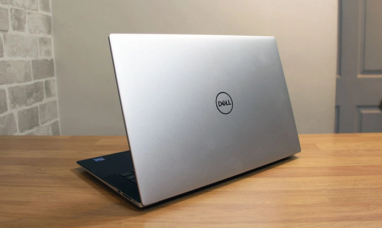AMD (NASDAQ:AMD)
The strong showing by AMD (NASDAQ:AMD) in the fourth quarter indicates that the company’s expansion narrative still needs to be completed. The company has increased its market share in the data center sector and, along with the outstanding results of its embedded segment, has mitigated the negative impact of the PC Client sector’s poor showing. With the apparent easing of dangers associated with China in 2023, AMD may continue to gain ground in the semiconductor market at Intel’s cost.
There Is Yet Room for Expansion
In a bullish essay I wrote before the fourth-quarter earnings report was released at the end of January, I stated that AMD’s company could perform better than projected due to the possible strong growth in the data centers and embedded divisions. Just look at AMD’s last earnings report: Q4 sales of $5.6 billion above market predictions by $80 million, and profitability also came in higher than expected.
Although Intel’s failure to rapidly execute a turnaround has already resulted in substantial losses for the company, the new report demonstrated that AMD has all the possibilities to continue to win further market share in the PC and data center sectors at Intel’s cost. With a larger market cap than Intel, a forward P/E ratio of 30 compared to 52 for Intel, and the ability to innovate for a fraction of Intel’s total capital expenditures, AMD stock has every opportunity to beat expectations and generate more shareholder value.
The data center industry has been a major contributor to AMD’s meteoric expansion in recent years, so it’s logical to anticipate that the company will continue to expand its presence in this sector. The company’s data centers division saw a 42% year-over-year rise in sales to $1.7 billion in Q4, big thanks to the successful launch of the fourth generation of EPYC server processors in November. New information shows that at the end of December, AMD had increased its share of the x86 CPU data center market from 25.6 percent a year earlier to 31.1 percent, up from 21.7 percent two years earlier. With any luck, we’ll escape a worldwide recession this year. If that happens, the growth in data center sales might make up for the predicted drop in AMD’s Client PC sector sales.
In addition, there are grounds for optimism that AMD’s embedded business unit would also exceed forecasts. Sales for the quarter were $1.4 billion, up 18 percent year over year, with an operating income of $699 million, or around half of the sales. Businesses in the military, aerospace, and communications industries are among AMD’s largest embedded client base. It stands to reason that AMD’s embedded business will continue to grow in the coming quarters, as global military expenditure is forecast to hit new high levels this year and as governments begin to subsidize the development of the internet infrastructure.
So, given these trends and projections, AMD’s growth narrative still needs to be done. The firm has all the tools necessary to demonstrate a respectable performance in FY23 and beyond, despite the uncertain state of the global economy.
Considering this, it is prudent to revise my DCF model, which predicted AMD’s fair value to be $90.89 per share before the company’s most recent earnings report was made public. As you can see in the updated model below, the macroeconomic headwinds might still impair AMD’s performance. However, all the growth catalysts have resulted in a lower top-line growth rate and lower profits, which align with the market’s current expectations. The model’s other measures remain unchanged, although the terminal growth rate and WACC have increased to 3% and 9%, respectively.
AMD’s enterprise value is $133 billion, according to the model, while its fair value is $87.28 per share, which is lower than the previous valuation of $90.89 per share but still higher than the current market price, indicating that the company continues to trade at a discount despite its relatively successful performance in Q4.
Possible Risks
Notwithstanding, two significant dangers to the bullish thesis should still be considered. Secondly, while exceeding general forecasts in Q4, AMD itself warned that the PC Client revenues might drop Y/Y in Q1 owing to the overall weakness of the PC market and only then begin to increase. Also, WSTS and Gartner all forecast a minor drop in the semiconductor sector in 2023, which may also impact AMD’s performance in the following quarters.
Moreover, one of AMD’s biggest disadvantages owing to the shifting geopolitical scenario is the company’s reliance on the Chinese consumer market, which accounts for a sizable portion of AMD’s sales. As I said in my first piece on AMD in October, any future conflict between China and the United States can severely damage AMD’s business model and derail its growth prospects. Although it seems like AMD has been able to mitigate the negative effects of the White House’s current chip export limitations in the last few months, there is no assurance that it would be able to prevent a financial impact that would undercut a bullish thesis should more limits be enacted.
Conclusion
Due to Intel’s failure to implement a turnaround swiftly, AMD has continued gaining market share in the data center business and outperforming forecasts despite the uncertain economic climate. If we can escape a recession and Sino-American relations don’t worsen again, AMD stock should be able to maintain its momentum and gain further in the next months since it is not overpriced and trades at a discount to its intrinsic worth.
Featured Image: Pexels @ Shawn Stutzman









